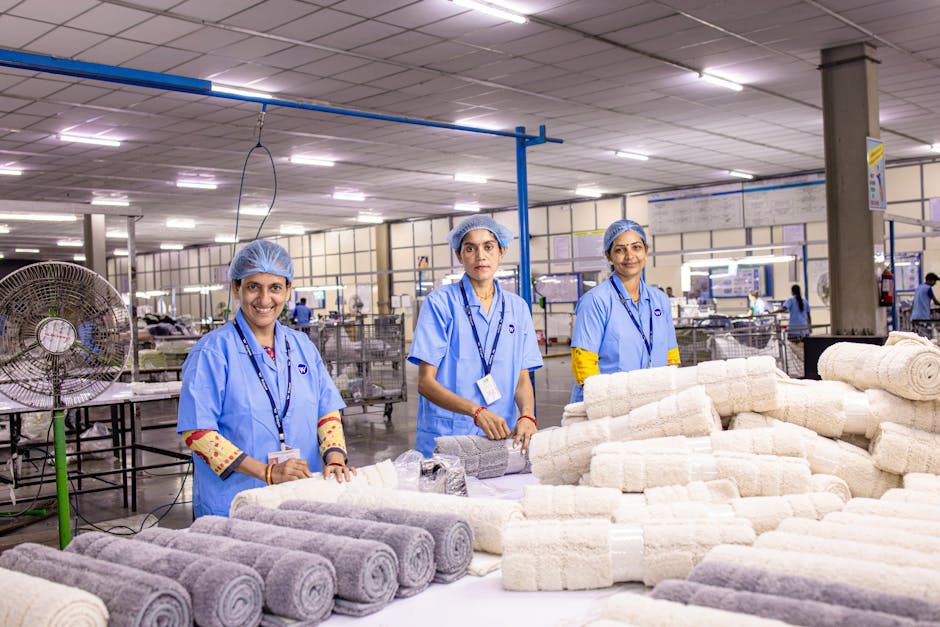Upskilling Programs for Line
The manufacturing landscape is undergoing rapid transformation. However, the role of the line supervisor remains critically important. These front-line leaders bridge the gap between strategic management and shop-floor execution. Additionally, they are directly responsible for team productivity, quality control, and safety compliance. Many supervisors are promoted from technical roles for their operational expertise. Furthermore, they often lack formal training in leadership and modern management techniques. This skills gap can hinder operational excellence and employee engagement. Therefore, targeted upskilling programs for line supervisor in manufacturing are no longer a luxury. They are a strategic imperative for any forward-thinking organization.
Understanding Upskilling Programs for Line
These programs are structured learning initiatives. They are designed to enhance the capabilities of existing supervisory staff. The focus moves beyond technical know-how. Instead, it builds crucial soft skills and modern management competencies. A comprehensive program covers leadership, communication, and problem-solving. Additionally, it includes training on data analysis and lean manufacturing principles. The goal is to transform a good supervisor into a great coach and leader. This evolution is essential for navigating today’s complex production environments.
Upskilling Programs for Line Benefits
Investing in supervisor development yields significant returns. First, it leads to a direct improvement in team performance and productivity. Well-trained supervisors can motivate their teams more effectively. Consequently, this reduces downtime and improves overall equipment effectiveness (OEE). Additionally, these programs drastically enhance workplace safety. Supervisors learn to proactively identify and mitigate risks. Therefore, they can foster a stronger culture of safety compliance. Moreover, employee retention often improves. Teams led by competent and supportive leaders are more engaged and less likely to leave. This saves considerable recruitment and training costs.
How Upskilling Programs for Line Works
Effective programs follow a blended and practical learning model. Typically, they combine classroom instruction with hands-on, real-world application. For example, a module on conflict resolution might include role-playing scenarios. Furthermore, many programs use mentorship, pairing new supervisors with experienced managers. This provides personalized guidance and support. Meanwhile, digital platforms offer flexible, on-demand learning modules. These can cover topics from supply chain logistics to human resources fundamentals. The structure is often modular. Thus, it allows supervisors to learn without significant time away from the production floor.
Best Upskilling Programs for Line Practices
Designing a successful initiative requires strategic planning. First, conduct a thorough skills gap analysis. This identifies the specific areas where your supervisors need development. Next, align the curriculum with overarching business goals. For instance, if quality is a priority, focus on Six Sigma and root cause analysis. Additionally, ensure content is relevant to your industry’s unique challenges. Furthermore, incorporate continuous feedback mechanisms. This allows for real-time program adjustments. Finally, secure visible support from senior leadership. Their endorsement underscores the program’s importance and encourages participation.
Upskilling Programs for Line Implementation
Rolling out a program demands careful execution. Start by communicating the value and benefits clearly to all participants. Address any concerns about time commitment or performance expectations. Next, schedule training sessions to minimize disruption to production schedules. Additionally, provide managers with the tools to support their supervisors’ learning journeys. Moreover, integrate learning with daily operations. For example, assign practical projects that solve actual plant problems. This reinforces the material and demonstrates immediate value. Consequently, supervisors see the training as an investment in their career growth, not just a corporate mandate.
Advanced Upskilling Programs for Line Strategies
For organizations seeking a competitive edge, advanced strategies are key. These include leveraging data analytics training. Supervisors learn to interpret production data to predict maintenance needs and optimize workflows. Furthermore, incorporate change management principles. This prepares leaders to guide their teams through technological adoption and process improvements. Another advanced tactic is cross-functional training. Allowing supervisors to understand sales, logistics, or R&D processes fosters a more holistic business perspective. This alignment is crucial for seamless operations across departments.
Upskilling Programs for Line Success Tips
Sustaining long-term success requires ongoing effort. First, measure the program’s impact using key performance indicators (KPIs). Track metrics like safety incident rates, team productivity, and employee satisfaction. Additionally, create a culture of continuous learning. Encourage supervisors to share knowledge with their peers and teams. Furthermore, regularly update the curriculum to reflect new technologies and methodologies. For instance, training on managing hybrid teams or using new ERP software might become necessary. Finally, recognize and reward progress. Celebrating achievements motivates participants and reinforces the program’s value.
Future of Upskilling Programs for Line
The future of these initiatives is digital and personalized. Artificial Intelligence (AI) will play a larger role in curating custom learning paths. Additionally, virtual and augmented reality (VR/AR) will provide immersive training for complex machinery and safety procedures. Furthermore, the focus will shift towards adaptability and resilience. Supervisors will need skills to manage remote teams and navigate supply chain volatility. Therefore, continuous learning will become embedded in the job itself. Organizations that master this will lead the industry. For more insights, explore our professional resources.
Frequently Asked Questions
What is the typical duration of upskilling programs for line supervisor in manufacturing?
Program duration varies significantly. Typically, comprehensive initiatives last from three to twelve months. This depends on the curriculum depth and delivery format. Furthermore, many programs are modular, allowing for flexible pacing.
How do we measure the ROI of supervisor upskilling programs?
Return on investment is measured through key metrics. Track improvements in productivity, quality defect rates, and safety incidents. Additionally, monitor reductions in team turnover and absenteeism. These tangible outcomes directly link to financial performance.
What are the core modules in a standard program?
Core modules usually include leadership fundamentals, effective communication, and performance management. Additionally, they cover lean manufacturing, problem-solving methodologies, and financial literacy. Safety leadership and compliance are also critical components.
Can these programs be delivered online effectively?
Yes, a blended approach is highly effective. Online modules offer flexibility for theoretical knowledge. However, in-person workshops and hands-on projects are crucial for practicing soft skills and applying concepts to real shop-floor challenges.
How do we get buy-in from supervisors for these programs?
Clear communication about career benefits is essential. Frame the program as a valuable investment in their professional growth. Additionally, involve them in the planning process and ensure content is directly relevant to their daily challenges.
What common pitfalls should we avoid during implementation?
Avoid a one-size-fits-all curriculum. Furthermore, do not neglect post-training support and application. Another pitfall is failing to align the program with company goals. Finally, lacking senior management support can severely undermine program success.
Conclusion
Robust upskilling programs for line supervisor are fundamental to manufacturing success. They build the leadership backbone required for modern production facilities. Additionally, they drive tangible improvements in safety, quality, and efficiency. Furthermore, they future-proof your organization against rapid technological change. Investing in your front-line leaders is a direct investment in operational excellence and competitive advantage. Therefore, the question is not whether you can afford to implement such a program, but whether you can afford not to. Begin your journey today by leveraging our professional resources or speaking directly with our team. For a tailored plan, expert consultation is available. You can also schedule appointment to discuss your specific needs.
Additional Resources and Authority Links
For further reading on global labor standards, consult the International Labour Organization guidelines. Understand broader economic contexts with the U.S. Department of Commerce trade information. For regional insights, refer to UAE government employment regulations. Workplace health standards are detailed by the World Health Organization workplace standards. Finally, global economic trends can be found in World Bank economic reports.




